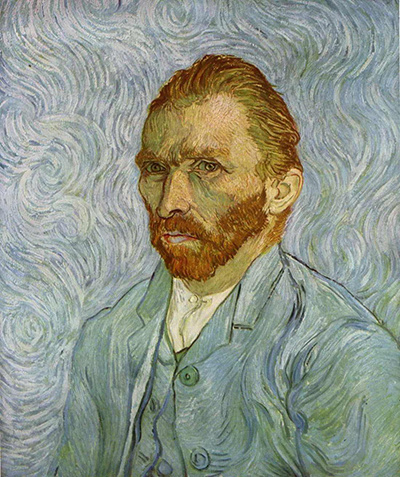During his life, Vincent van Gogh painted dozens of self-portraits. Most of these follow a similar pattern, with van Gogh sitting at a slight angle from the viewer with a serious expression on his face.
This particular piece was painted in 1889 and is speculated to be one of his last self-portraits, and maybe even the last one itself. It is painted from the side that hides his mutilated ear, since this was painted in the French town of Saint-Rémy toward the end of his life. It was gifted to his brother in the weeks before Vincent van Gogh's death. One of the remarkable things about van Gogh is that despite there being very few photographs of him in existence, almost everyone with even a small understanding of western art can picture his face.
This is due to the infamy of his self-portraits. The constant creation almost seemed to be a compulsion for van Gogh, as though he was set on presenting himself at every possible stage of his life, even as the end crept closer. Vincent van Gogh's use of colour is well-regarded, and he is one of the true masters of oil painting. This is in part due to the unusual choices he makes with the shape of his brush strokes; there are very few straight lines in them, and almost none in this painting.
Behind him the dusty blue of the wall (or perhaps the sky) swirls and swoops on itself, creating a backdrop that is as eye-catching as the painter himself. These dynamic shapes and expressive colours seem to bring the artist himself to life within the painting. There is a sadness in the gaze peering out from the canvas, which is not surprising considering the mental health issues that afflicted the artist throughout his life.
His shoulders seem almost hunched, though he was not an old man at this time, and his brow is furrowed. All of this builds into a sad portrayal of one of the true geniuses of the last two hundred years, created by his own hand. Despite the sadness evident in it, or perhaps because of it, this is one of van Gogh's most striking and memorable self-portraits. It brings a dark time in his life into a new kind of beauty.




